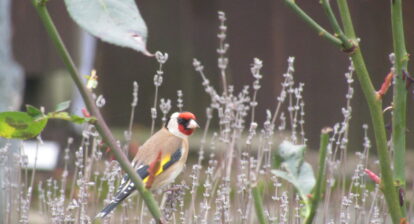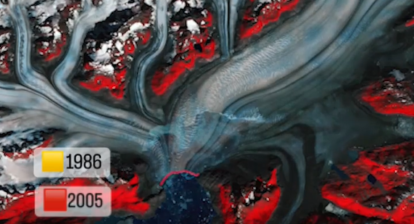There is only one insect native to the freezing continent of Antartica, a midge known as Belgica antartica. Antartic winters are challanging for most terrestrial animals that live there, especially the invertebrates, and local species have developed specialised adaptations to conserve energy and prevent against cold injury in winter.
This is also what Belgica antarctica has done. Over tens of millions of years it has learned to survive the coldest of Antartica’s winters by freezing itself dry. This ability has turned it into the only native insect on that continent.
Although, this organism is generally smaller that a centimeter, it also happens to be the largest animal in the continent that has never spent any part of its lifecycle in the ocean. The four larval stages of its lifecycle are usually spent dining on moss and algae on the frozen land. During winter when these refuges freeze over, the midge slowly desiccates itself, often losing as much as three-quarters of its body moisture. Under optimum conditions, this adaptation helps it to survive the winter and make it through to summer. But there are a lot of variables involved in this and even slight changes in environmental conditions could lead to drastic consequences for the midge.
As global climate rapidly becomes warmer, Antarctic winters are likely to become unpredictable. How highly adapted species like the midge will respond is unclear. Higher temperatures are likely to result in increased precipitation in the form of snow, which could mean more insulation for the midge and less chance of freezing over. Or it could mean a host of other, as yet unknown, problems.
To understand the impacts of a warming world on the survival of the midge, a team of scientists from the US, UK, and South Africa conducted experiments in the laboratory, showing that warmer winters had a huge impact on the midge’s movement and energy stores, potentially endagering its chances of surviving till the summer.
After collecting midge larvae from a station on Anvers Island at the tip of the Antarctic Peninsula, they evaluated the response of the larvae to three simulated winter temperature scenarios: warm (-1C), normal (-3C) and cold (-5C). Generally in the Antarctic Peninsula, the microclimates where the midges live tend to be somewhere between -5 and 0 degrees Celsius (23 and 32 Fahrenheit). Layers of snow and ice protect their mossy homes, even while temperatures in the atmosphere above freeze over. Within each scenario, larvae were placed in three different habitat types and following the simulated overwintering period, a range of physiological responses of the midge were measured. These included survival, locomotion, tissue damage, energy store levels, and molecular stress respones.
The observations showed that slight differences in temperature had a huge impact on the midge’s recovery. Survival, energy stores and locomotor activity were significantly lower after the warm overwintering scenario than at lower temperatures. However, tissue damage and heat shock protein expression did not significantly differ between the three scenarios. Basically, under the usual conditions, approximately half of the midges made it through to winter. But with a warming of just a few degrees, only one-third survived.
According to the report, “These results correspond with locomotor activity levels, where larvae from the warm winter regime were slowest, potentially due to energy drain”.
“With limited time prior to pupation after winter, and as adult B. antarctica lack functional mouthparts, energy store depletion during late larval instars would likely have irreversible consequences on the energy available for reproduction”, they add.
“Our results demonstrate that a realistic 2C increase in winter microhabitat temperature reduces survival and causes energy deficits that have implications for subsequent development and reproduction. While our warm winter scenario was close to the range of observed overwintering temperatures for this species, warmer winters are expected to become more common in response to climate change. Conversely, if climate change reduces the length of winter, some of the negative consequences of winter warming may be attenuated, so it will be important to consider this factor in future studies. Nonetheless, our results indicate that winter warming could negatively impact cold-adapted insects such as the Antarctic midge”, the researchers conclude.
This means that warmer winters may adversely impact the survival of this niche species, but on the other hand with rising temperatues, winters might be shorted, giving it more time to collect larger energy stores. We just don’t know what is likely to happen but overall, this situation is potentially a death-knell for this, the only Antartic invertebrate species.
Read the whole study.







